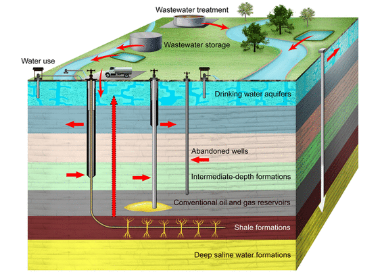Oil and gas exploration and drilling are essential components of the global energy industry. However, for homeowners and residents living near potential drilling sites, the question of how close oil and gas companies can drill to their homes is a matter of concern. In this article, we will explore the factors that influence drilling proximity, including regulations, well types, and environmental considerations.
- Zoning Regulations and Setback Distances:
One of the primary determinants of how close oil and gas companies can drill to your home is local zoning and land use regulations. These regulations are put in place to safeguard the well-being of residents and the environment. Setback requirements specify the minimum distance that drilling operations must maintain from residential areas, schools, hospitals, and other sensitive locations.
The specific setback distances can vary significantly from one jurisdiction to another. Some areas may require a relatively small setback, while others may mandate more extensive buffers between drilling operations and homes. It's crucial to familiarize yourself with the regulations in your local area to understand the rules that apply to your community.
- Types of Wells:
The type of well being drilled can also influence how close drilling operations come to your home. Two common types of wells are vertical wells and horizontal wells.
-
Vertical Wells: These wells go straight down into the ground and generally have smaller setback requirements. This means they may be allowed closer to residential areas.
-
Horizontal Wells: Horizontal drilling allows companies to access resources from greater distances underground. As a result, these wells often require larger setback distances to mitigate potential impacts on nearby homes.
- Advanced Drilling Techniques:
Advances in drilling technology have expanded the reach of drilling operations. Techniques like directional drilling and hydraulic fracturing (fracking) enable companies to drill horizontally for thousands of feet underground. This can increase the drilling footprint, potentially affecting residential areas that are farther away from the wellhead.
- Environmental and Safety Considerations:
Local regulations may take into account environmental and safety concerns when determining setback distances. These concerns can include the risk of groundwater contamination, air quality issues, noise, and vibrations. Stricter regulations may be imposed in areas with higher population density or sensitive ecosystems.
- Negotiations and Agreements:
In some cases, oil and gas companies may negotiate with landowners to obtain drilling rights closer to homes. These negotiations can result in agreements that allow drilling within certain distances of residences. Such agreements may involve compensation or additional safety measures to address residents' concerns.
The federal government requires that existing homes be no closer than 300 feet from active or planned oil and gas drilling sites. Many states have a setback requirement, but most are in the range of 150 to 500 feet.
Public health experts recommend a minimum safe distance of 3,200 feet between neighborhoods and drilling. The University of Maryland's School of Public Health recommended that the state set a distance of 2,000 feet from any well.
The earlier safety setback of 150 feet was a calculation of 1.5 times the height of a drilling rig, meant to protect homes and buildings if a rig toppled over. The New feet setback was a compromise among everyone from energy companies to farmers, to home developers, to concerned residents.
Conclusion:
The proximity of oil and gas drilling to your home is influenced by a complex interplay of regulations, well types, drilling techniques, and environmental considerations. To understand how close drilling can occur in your area, it's essential to research local regulations and engage with your community to stay informed and ensure that your concerns are adequately addressed. By staying informed and participating in the decision-making process, you can help protect the well-being of your community in the context of oil and gas drilling operations.

